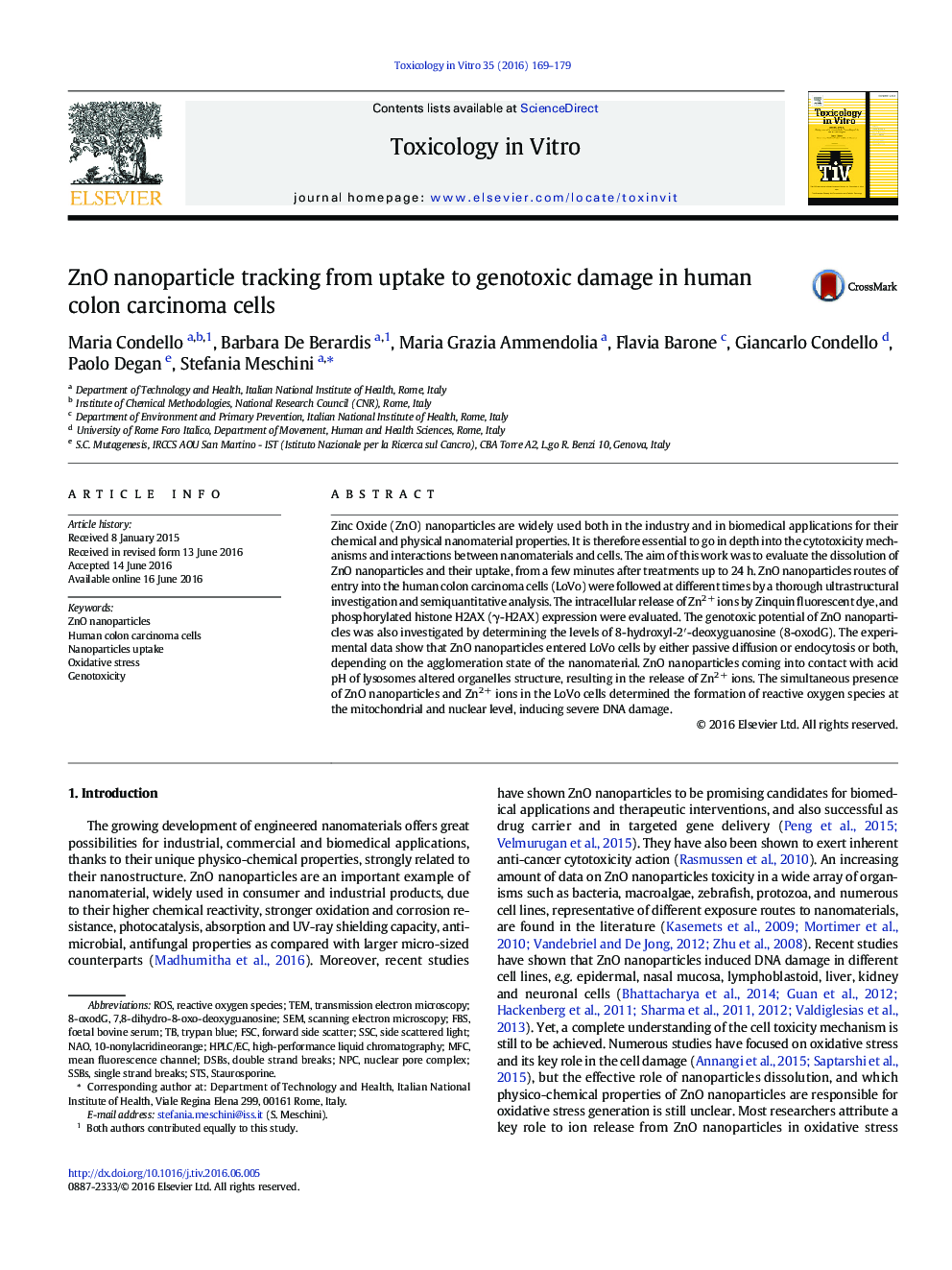| Article ID | Journal | Published Year | Pages | File Type |
|---|---|---|---|---|
| 5861050 | Toxicology in Vitro | 2016 | 11 Pages |
â¢Study of ZnO nanoparticles uptake at multiple time points in LoVo cellsâ¢Either passive diffusion or endocytosis or both mechanisms determine nanoparticle uptake and intracellular fate.â¢The state of aggregation influences nanoparticle route of entry.â¢ZnO nanoparticles cell damage derives from a combined action between intact nanoparticles and Zn2 + ions.
Zinc Oxide (ZnO) nanoparticles are widely used both in the industry and in biomedical applications for their chemical and physical nanomaterial properties. It is therefore essential to go in depth into the cytotoxicity mechanisms and interactions between nanomaterials and cells. The aim of this work was to evaluate the dissolution of ZnO nanoparticles and their uptake, from a few minutes after treatments up to 24 h. ZnO nanoparticles routes of entry into the human colon carcinoma cells (LoVo) were followed at different times by a thorough ultrastructural investigation and semiquantitative analysis. The intracellular release of Zn2 + ions by Zinquin fluorescent dye, and phosphorylated histone H2AX (γ-H2AX) expression were evaluated. The genotoxic potential of ZnO nanoparticles was also investigated by determining the levels of 8-hydroxyl-2â²-deoxyguanosine (8-oxodG). The experimental data show that ZnO nanoparticles entered LoVo cells by either passive diffusion or endocytosis or both, depending on the agglomeration state of the nanomaterial. ZnO nanoparticles coming into contact with acid pH of lysosomes altered organelles structure, resulting in the release of Zn2 + ions. The simultaneous presence of ZnO nanoparticles and Zn2 + ions in the LoVo cells determined the formation of reactive oxygen species at the mitochondrial and nuclear level, inducing severe DNA damage.
Graphical abstractDownload high-res image (77KB)Download full-size image
